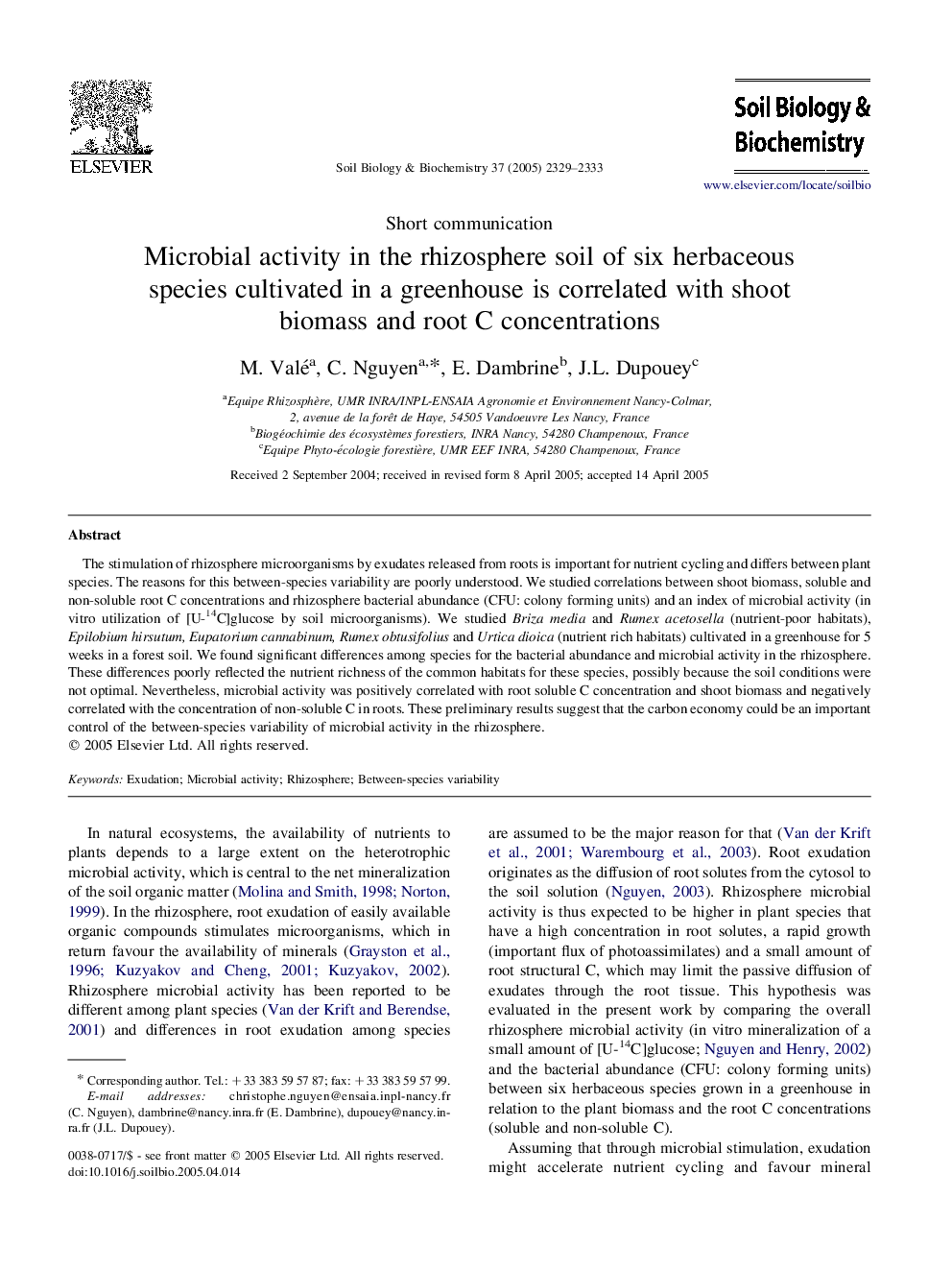| Article ID | Journal | Published Year | Pages | File Type |
|---|---|---|---|---|
| 2026517 | Soil Biology and Biochemistry | 2005 | 5 Pages |
The stimulation of rhizosphere microorganisms by exudates released from roots is important for nutrient cycling and differs between plant species. The reasons for this between-species variability are poorly understood. We studied correlations between shoot biomass, soluble and non-soluble root C concentrations and rhizosphere bacterial abundance (CFU: colony forming units) and an index of microbial activity (in vitro utilization of [U-14C]glucose by soil microorganisms). We studied Briza media and Rumex acetosella (nutrient-poor habitats), Epilobium hirsutum, Eupatorium cannabinum, Rumex obtusifolius and Urtica dioica (nutrient rich habitats) cultivated in a greenhouse for 5 weeks in a forest soil. We found significant differences among species for the bacterial abundance and microbial activity in the rhizosphere. These differences poorly reflected the nutrient richness of the common habitats for these species, possibly because the soil conditions were not optimal. Nevertheless, microbial activity was positively correlated with root soluble C concentration and shoot biomass and negatively correlated with the concentration of non-soluble C in roots. These preliminary results suggest that the carbon economy could be an important control of the between-species variability of microbial activity in the rhizosphere.
